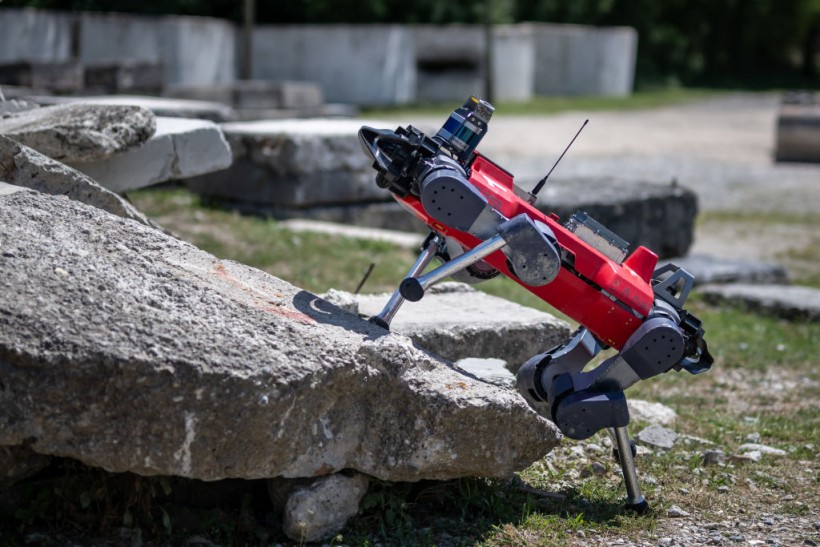A group of researchers in Switzerland have developed a model that enables robots to perform tasks such as opening dishwashers and doors with "minimal manual guidance."

A photograph shows the autonomous four-legged robot "ANYmal" during the event ARCHE (Advanced Robotic Capabilities for Hazardous Environments) aiming to test the potential of robotics to help in disaster relief, in Avully, near Geneva, on July 13, 2023.
Three-Step Process
According to TechCrunch, the model involves a three-step process: the user describes the scene and action, and the system then plans a route and refines the route to find the most efficient path.
The model outlined in the research paper of ETH Zurich researchers in Switzerland works through high-level descriptions of both the robot and the object it needs to interact with. It also encodes the task specification through a sparse objective.
That allows the planner to determine how the robot should move, what forces it should exert, which limbs it should use, and when and where it should establish or break contact with the object.
The system is classified into two primary methods: one focused on objects and the other on robots. Object-centric tasks encompass activities such as opening doors or dishwashers, whereas robot-centric tasks deal with navigating the robot around objects.
The researchers highlighted that the system's versatility allows it to be well-suited for diverse robot configurations. To showcase its potential, the team employed ANYbotics' quadruped robot called ANYmal. ANYbotics, a startup originating from ETH Zurich, has emerged as a hub for conducting research projects of this nature.
Furthermore, the researchers believe this work is crucial to developing fully autonomous loco-manipulation pipelines. It could lead to robots being capable of executing tasks like opening doors without human assistance.
Read Also: Decade-Old NASA Moon Rover Undergoes Pressurized Ground Tests; Here's What to Know About Desert RATS
Functionality of Robots in Various Environments
The abstract of the study underscores the significance of these advancements in robotics. Loco-manipulation planning skills are essential for expanding the functionality of robots in various environments.
While existing methods often rely on manually engineered approaches or expert demonstrations, this new framework autonomously discovers trajectories and contact schedules for solving complex loco-manipulation tasks.
The approach blends trajectory optimization and graph search techniques, showcasing behaviors in a quadrupedal mobile manipulator to perform real-world tasks like opening heavy dishwashers and navigating spring-loaded doors.
"We showcase emergent behaviors for a quadrupedal mobile manipulator exploiting both prehensile and nonprehensile interactions to perform real-world tasks such as opening/closing heavy dishwashers and traversing spring-loaded doors. These behaviors are also deployed on the real system using a two-layer whole-body tracking controller," the researchers wrote.
This research could mark a milestone in the quest to make robots more adept at interacting with their environments autonomously. As robotics technology continues to advance, the potential for robots to handle a wider range of tasks in real-world scenarios grows, heralding the possibility of a more automated and capable future.
The findings of the team were published in Science Robotics.
Related Article: World's Fastest Shoes: Electric Roller Skates 'Moonwalkers' Give Users a 250% Increase in Walking Speed










